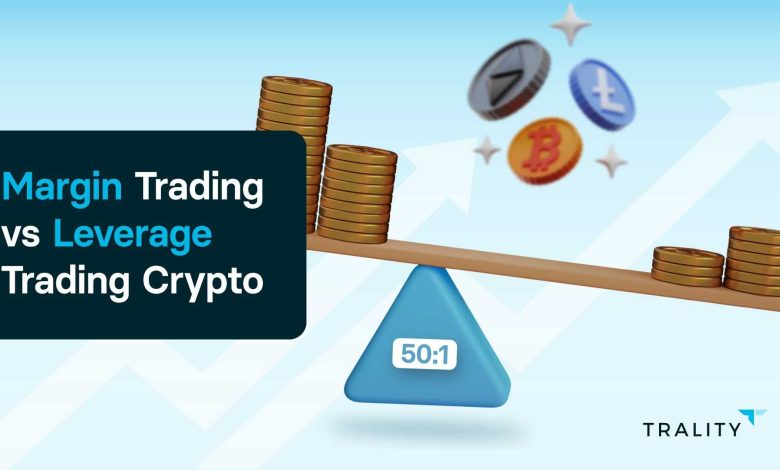How to Use Leverage and Margin on Crypto Exchanges

- Understanding Leverage and Margin in Crypto Trading
- The Risks and Rewards of Using Leverage on Crypto Exchanges
- Choosing the Right Leverage Level for Your Crypto Trades
- Tips for Managing Margin Calls and Liquidation on Crypto Exchanges
- Exploring the Benefits of Margin Trading in the Crypto Market
- Common Mistakes to Avoid When Using Leverage on Crypto Exchanges
Understanding Leverage and Margin in Crypto Trading
Understanding leverage and margin in crypto trading is crucial for traders looking to maximize their potential profits. Leverage allows traders to control a larger position with a smaller amount of capital, amplifying both gains and losses. Margin, on the other hand, refers to the amount of funds that a trader must deposit in order to open a leveraged position.
When using leverage, traders borrow funds from the exchange to increase their position size. This can be a powerful tool for experienced traders who want to take advantage of market movements. However, it also comes with increased risk, as losses can exceed the initial investment. It is important for traders to carefully manage their risk and set stop-loss orders to protect their capital.
Margin requirements vary between exchanges and can depend on factors such as the volatility of the market and the size of the position. Traders should be aware of the margin requirements of the exchange they are using and ensure they have enough funds to cover potential losses. It is also important to understand the concept of liquidation, where the exchange will automatically close a trader’s position if it reaches a certain level of loss.
The Risks and Rewards of Using Leverage on Crypto Exchanges
When considering the use of leverage on crypto exchanges, it is important to weigh the risks and rewards associated with this strategy. Leverage can amplify both gains and losses, making it a powerful tool for experienced traders but also a potential pitfall for those who are not well-versed in its complexities.
One of the main risks of using leverage is the potential for significant losses. Because leverage allows traders to control a larger position with a smaller amount of capital, even a small price movement in the wrong direction can result in substantial losses. It is crucial to have a solid risk management strategy in place to protect against this possibility.
On the other hand, the rewards of using leverage can be substantial for traders who are able to accurately predict market movements. By amplifying their gains, traders can potentially increase their profits significantly. However, it is important to remember that leverage works both ways, and gains can quickly turn into losses if the market moves against you.
Overall, the decision to use leverage on crypto exchanges should be made carefully and with a full understanding of the risks involved. It is recommended to start with a small amount of leverage and gradually increase it as you gain more experience and confidence in your trading abilities. Remember to always prioritize risk management and never trade with more leverage than you can afford to lose.
Choosing the Right Leverage Level for Your Crypto Trades
When it comes to leveraging your crypto trades, it is crucial to choose the right leverage level to maximize your potential profits while minimizing risks. The leverage level you select will determine the amount of capital you can borrow from the exchange to increase the size of your position. It is essential to strike a balance between taking advantage of leverage to amplify gains and avoiding over-leveraging, which can lead to significant losses.
Before deciding on the leverage level for your trades, consider factors such as your risk tolerance, trading experience, and market conditions. It is recommended to start with a lower leverage level, such as 2x or 3x, if you are new to leveraging. As you gain more experience and confidence in your trading abilities, you can gradually increase the leverage level to 5x or 10x.
Keep in mind that higher leverage levels come with increased risks, as even small price movements can result in significant losses. It is crucial to set stop-loss orders to limit potential losses and protect your capital. Additionally, make sure to conduct thorough research and analysis before entering leveraged trades to make informed decisions and mitigate risks.
Tips for Managing Margin Calls and Liquidation on Crypto Exchanges
When using leverage and margin on crypto exchanges, it is crucial to be aware of how to manage margin calls and liquidation effectively. Here are some tips to help you navigate these potential risks:
- Monitor your margin level regularly to ensure you have enough collateral to cover your positions.
- Set stop-loss orders to limit your losses and prevent your account from reaching a critical margin level.
- Diversify your investments to reduce the impact of a single asset’s price movement on your margin level.
- Keep track of market volatility and news that could affect the value of your positions.
- Consider using risk management tools provided by the exchange, such as liquidation prices and margin call notifications.
By following these tips, you can better protect your investments and minimize the risk of margin calls and liquidation on crypto exchanges. Remember to always trade responsibly and stay informed about the market conditions to make informed decisions.
Exploring the Benefits of Margin Trading in the Crypto Market
Margin trading in the crypto market offers several benefits for traders looking to maximize their potential returns. By using leverage, traders can amplify their positions and potentially increase profits. However, it is essential to understand the risks involved and use caution when engaging in margin trading.
One of the primary benefits of margin trading is the ability to access more significant trading positions with a smaller initial investment. This can allow traders to take advantage of market opportunities that they may not have been able to otherwise. Additionally, margin trading can help traders diversify their portfolios and hedge against potential losses.
Another benefit of margin trading is the potential for higher returns. By using leverage, traders can magnify their gains if the market moves in their favor. However, it is crucial to remember that leverage can also amplify losses, so it is essential to use risk management strategies and set stop-loss orders to protect your investment.
Margin trading can also provide traders with more flexibility in their trading strategies. By using leverage, traders can take advantage of short-term market movements and profit from both rising and falling prices. This can help traders capitalize on market volatility and generate profits in various market conditions.
Overall, margin trading can be a powerful tool for experienced traders looking to enhance their trading strategies and potentially increase their profits. However, it is essential to approach margin trading with caution and fully understand the risks involved. By using leverage responsibly and implementing risk management strategies, traders can take advantage of the benefits of margin trading while minimizing potential losses.
Common Mistakes to Avoid When Using Leverage on Crypto Exchanges
When using leverage on crypto exchanges, there are several common mistakes that traders should avoid to minimize risks and maximize potential profits. One of the most common mistakes is overleveraging, which occurs when traders borrow more funds than they can afford to lose. This can lead to significant losses if the market moves against them. It is important to carefully consider the amount of leverage used and to only trade with funds that you can afford to lose.
Another common mistake is failing to set stop-loss orders. Stop-loss orders are essential risk management tools that help protect traders from large losses. By setting a stop-loss order, traders can automatically sell their position if the price reaches a certain level, limiting their losses. Failing to set stop-loss orders can result in significant losses if the market moves against you.
Additionally, traders should avoid using excessive leverage on highly volatile assets. While leverage can amplify profits, it can also amplify losses. Trading with high leverage on volatile assets can result in significant losses in a short period of time. It is important to carefully consider the volatility of the asset being traded and to adjust leverage accordingly.
Lastly, traders should avoid holding leveraged positions for extended periods of time. Leveraged positions are designed for short-term trading and can incur additional fees if held overnight. Additionally, holding leveraged positions for extended periods exposes traders to increased risk, as the market can be unpredictable over longer time frames. It is important to carefully monitor leveraged positions and to close them out if necessary to avoid unnecessary risks.



